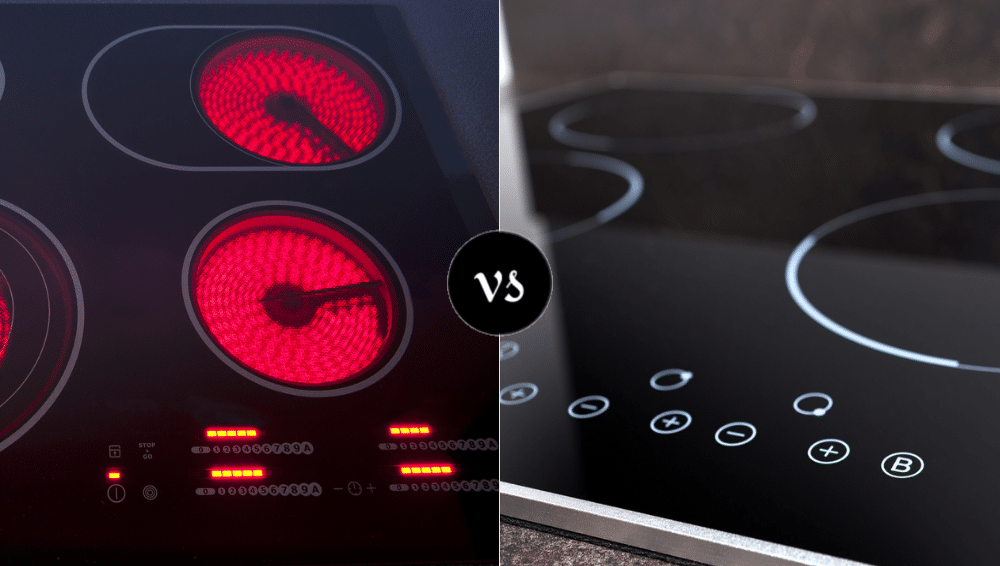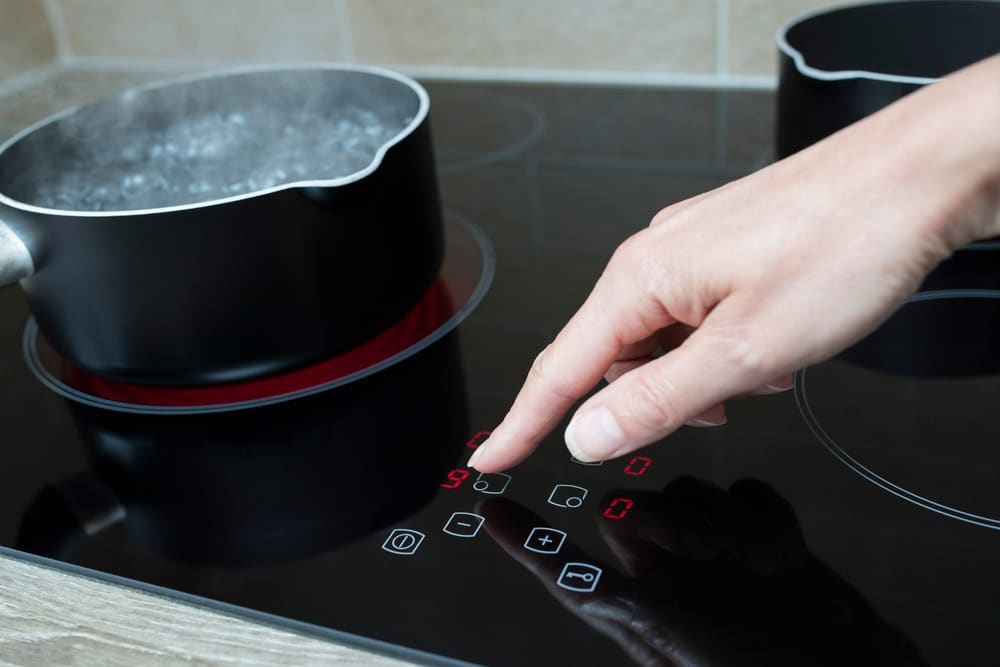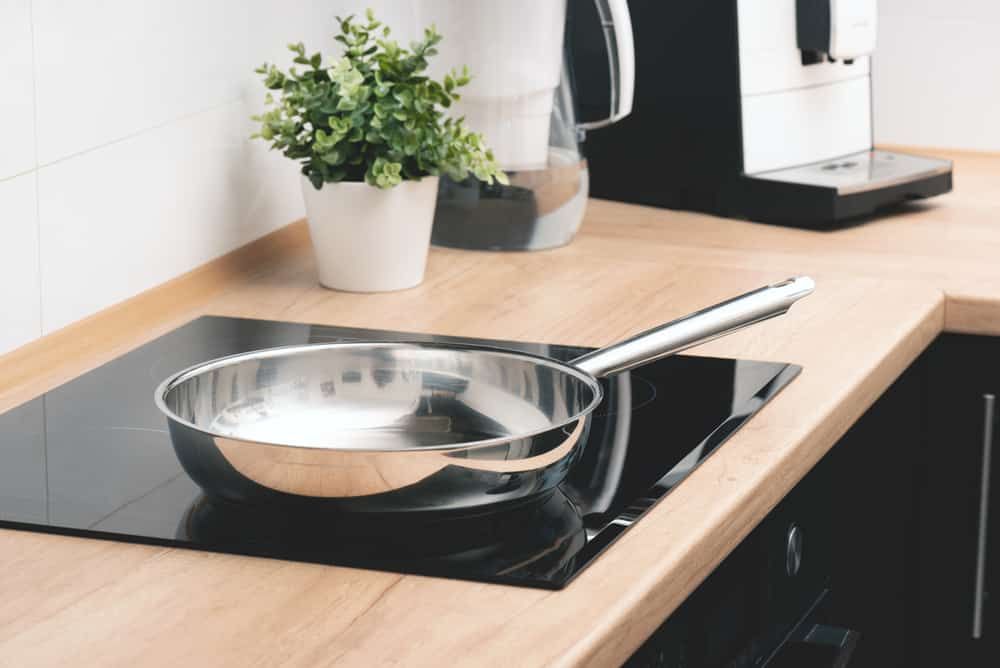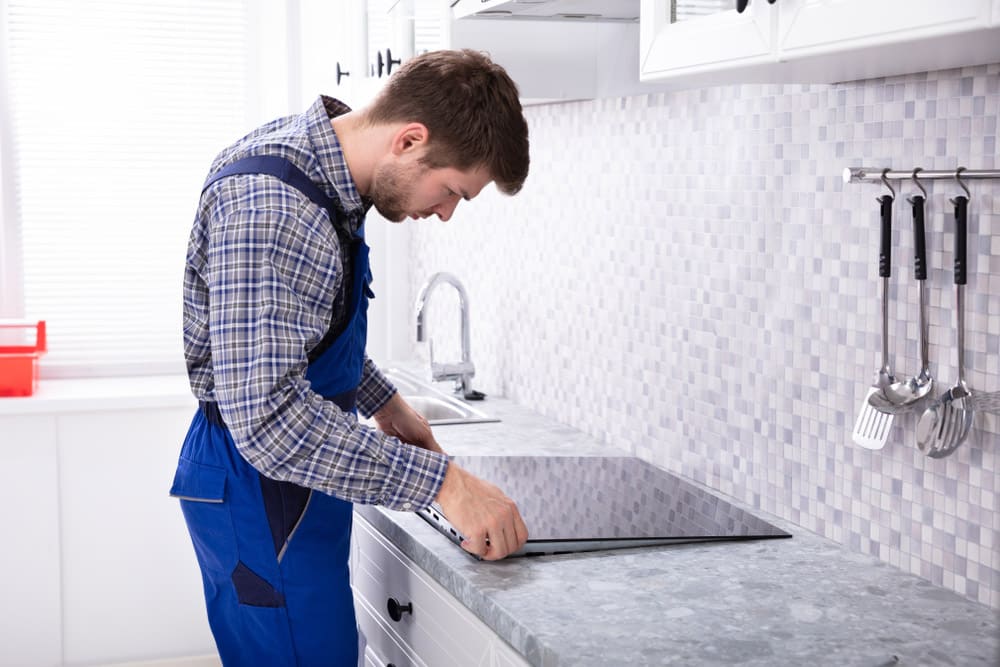
Centuries ago, people would cook over open fires. Today, we have the convenience of stoves. Our ancestors wouldn’t believe how easy we have it today with these amazing appliances in our kitchens. Producing a delicious meal requires precious little effort.
It doesn’t matter what cooking style you prefer; there will be a stove to suit your kitchen. Before you choose a stove, it’s a good idea to research the different kinds there are.
Modern stoves have so many features that it pays to know what will suit you. It also pays to look at the pros and cons of how each stove works.
We’re going to look at the halogen stove and the induction stove and see which one would be the better option for you. Professional chefs enjoy induction cooking, saying it’s the most efficient cooking appliance they know.
Today, halogen and induction hobs look alike, but they use different technologies. Induction hobs use an electromagnetic field that immediately transfers heat to the pot, while halogen cookers use infrared radiation that heats up the pot.
We’re going to take a deeper look at how these two stoves work and determine which would be your better option.
What is a halogen stove?
It’s a kind of electric stove. So although the halogen stove does run on electricity, it is somewhat different from electric stoves.
A halogen hob uses light bulbs to produce the heat required for cooking. The glass tube light bulbs are beneath the ceramic surface of the hob.
- These stoves have infrared elements and use radiant heat, which is transferred directly to the cookware. It is this technology that makes halogen hobs quite similar to gas or even induction hobs rather than electric stoves.
- The stoves use halogen bulbs as the heating element. These bulbs produce infrared radiation, which heats up the pot as opposed to the air around it. The bulbs provide usage of between 2 000 and 4 000 hours, which is a long time. When they do eventually wear out, they can be replaced. Cooks love that halogen stoves heat up so quickly. The power settings of a halogen hob can be anything from 150W to 2000W, which provides cooking temperatures up to 700°C. Induction heating can vary between 30°C and 260°C.
- Even though induction hobs will reach the desired heat setting faster, halogen hobs can achieve higher temperatures.
- Halogen stoves are also energy-efficient—the perfect option for modern kitchens.
- Some chefs prefer halogen ovens for baking and cooking as these ovens provide reliable results with specific dishes. They provide circulating hot air that greatly assists with even cooking. It uses a halogen lamp and a fan to circulate hot air around the food.
- One big drawcard in favor of halogen stoves is that halogen cooktops are most often less expensive than induction cooktops.
What is an induction oven?
An induction stove uses induction heating to cook food. An alternating current runs through copper wiring below the cooktop surface.
It gives off a magnetic field so that when a ferromagnetic pot is placed on the surface, the magnetic field creates an electrical current in the pot, generating heat to cook your food.
So essentially, induction cooktops use electromagnetic fields to heat your pot.
- Home cooks and chefs always want efficiency when preparing food. When comparing induction cooktops to halogen cooktops, you’ll discover that induction stoves are generally considered more efficient.
- Induction ovens heat up quicker, and they also use less energy. However, halogen ovens are also energy-efficient, and they’re able to cook a variety of foods.
- Halogen stoves have less flexibility because of their fixed zones whereas the induction stove is more flexible with more area for cooking.
- Cooks, whether professional or otherwise, have different preferences when it comes to stoves and cooking appliances. Many professional chefs prefer using induction cooktops because of their excellent temperature control and fast heating times. Induction cooktops are preferred in hot kitchens too, as they don’t heat up the surrounding air.
- Safety is always a big issue when it comes to using a stove. Induction cooktops are considered a safer option than halogen cooktops. This is because they only heat up the cooking vessel, while halogen cooktops pose a burning risk as they heat up the surface around the pot. The halogen stove surface will take roughly 15 minutes to cool down while with the induction stove you can touch the surface almost instantly.
Halogen Stove vs. Induction Stove
Radiation vs. Electromagnetics?
Nothing is set in stone when it comes to which is the better stove—a halogen or an induction stove. When you’re looking to update your kitchen, you’ll be thrilled with any one of these smart devices. Both of these stoves have sleek, shiny ceramic glass surfaces.
However, it’s the method of heating that is so different. It’s radiation vs. electromagnetics. Bear in mind that induction hobs can only use cookware that has magnetic steel or iron.
To connect with the electromagnetic system, the cookware needs to have at least a layer of ferrous material.
An advantage of halogen hobs is that materials don’t restrict them, although superior-grade stainless steel or cast iron pans are the preferred choices.
Understand the subtle differences
Essentially, the two stoves serve different purposes. Yes, if you want a stove that heats up the contents of your pot quickly, then an induction cooktop might be the better choice. However, in this day and age, the drawcard of the halogen stove is that it is less expensive.
Do additional research and understand all the differences before you make your choice. Ultimately, the choice you make will depend on your particular cooking needs.


